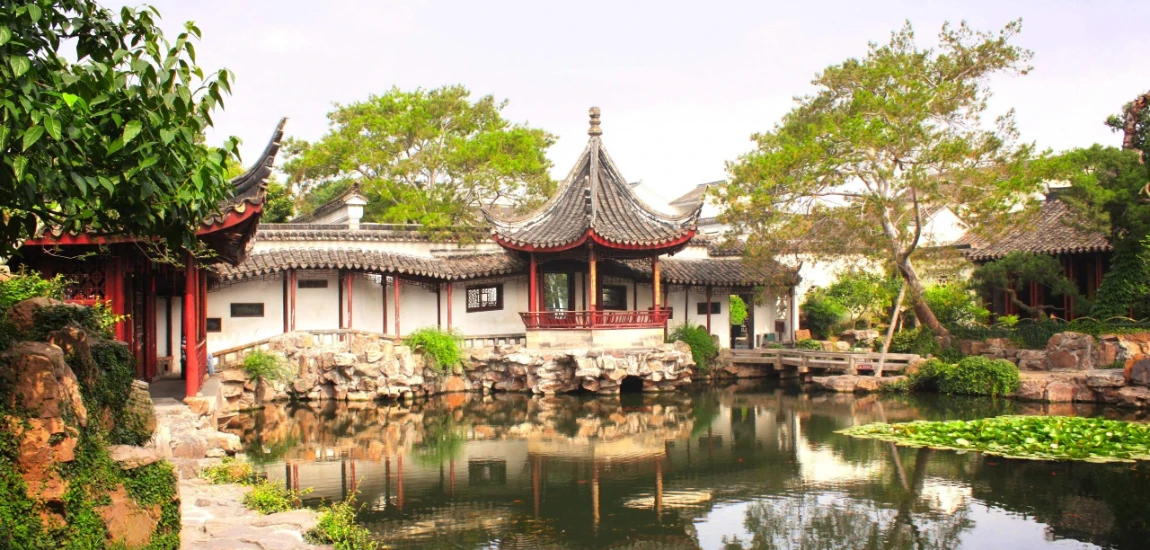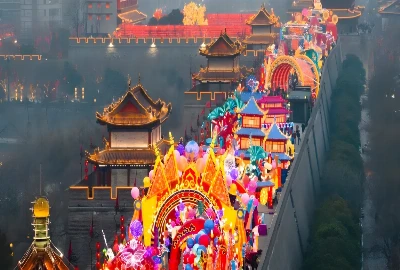Explore Suzhou: China’s Venice of the East with Canals, Gardens & Silk

Nestled in China’s Jiangsu Province, Suzhou is often referred to as the Venice of the East—and for good reason. With a history that spans over 2,500 years, this graceful city is famed for its poetic water towns, elegant classical gardens, and a centuries-old silk industry that once dressed emperors. Unlike the megacities of Beijing or Shanghai, Suzhou is a tranquil blend of culture, art, and nature.
If you're planning to explore Suzhou, this blog is your complete guide to its must-see attractions, unique experiences, and travel tips that will help you soak in the city’s timeless beauty.
A Stroll Through Suzhou’s Ancient Canals
The heart of Suzhou lies in its canals and stone bridges, some of which date back to the Tang and Song dynasties. Historically, these waterways formed a vital network for trade and everyday life. Today, they offer a glimpse into a serene past.
Best Canal Areas to Visit:
-
Pingjiang Road: A historic pedestrian street along a canal, perfect for walking or sipping tea by the water. You’ll find quaint teahouses, bookstores, and local snacks here.
-
Shantang Street: A lively spot combining cultural heritage with local flavor. It's especially charming at night when the lanterns reflect off the water.
-
Tongli Water Town: Located just outside Suzhou, this preserved ancient town features arched bridges, stone-paved lanes, and gondola-style boat rides.
Tip: Take a canal boat ride in the evening for a peaceful and romantic view of Suzhou under soft lights.
The Classical Gardens of Suzhou: UNESCO Gems
Suzhou is home to some of China’s most celebrated classical gardens, earning it a place on the UNESCO World Heritage list. These gardens reflect traditional Chinese aesthetics and are designed to mimic natural landscapes in miniature form, incorporating rockeries, ponds, pavilions, and delicate flora.
Must-See Gardens:
-
The Humble Administrator’s Garden (Zhuozheng Yuan): The largest and most famous of all, dating back to the 16th century.
-
The Lingering Garden (Liu Yuan): Known for its exquisite layout and artistic rock formations.
-
The Master of the Nets Garden (Wangshi Yuan): Compact but elegant, especially beautiful in the evening light.
Travel Tip: Buy a garden pass that allows entry to multiple gardens if you're planning a longer stay. Arrive early in the morning to avoid crowds and enjoy the peaceful atmosphere.
Suzhou’s Silk Legacy: Threads of History
Suzhou has been a center of silk production for over 4,000 years. Known for its high-quality craftsmanship, Suzhou silk was once a prized export along the Silk Road and remains a proud symbol of Chinese cultural heritage.
Where to Learn and Shop:
-
Suzhou Silk Museum: Offers an in-depth look into the history and techniques of silk-making, from silkworm farming to weaving.
-
No.1 Silk Factory: Take a guided tour to watch live demonstrations of silk production. There's also a shop to buy silk scarves, robes, and bedding.
Silk Shopping Tip: Authentic Suzhou silk has a soft sheen and smooth texture. Bargain respectfully at markets, but always check the quality.
Cultural Gems & Local Landmarks
Beyond canals and gardens, Suzhou boasts a rich collection of cultural and historical sites.
Notable Attractions:
-
Suzhou Museum: Designed by architect I.M. Pei, this museum blends modern architecture with traditional Chinese aesthetics and houses stunning local artifacts.
-
Tiger Hill (Huqiu): A picturesque hill with a leaning pagoda older than the Leaning Tower of Pisa, surrounded by lush scenery.
-
Panmen Gate: A historic city gate flanked by ancient walls and waterways, showcasing Suzhou’s military and architectural past.
Bonus Experience: Catch a Kunqu Opera performance—a traditional Chinese opera style that originated in Suzhou.
Savoring Suzhou’s Local Flavors
Suzhou cuisine is subtle, slightly sweet, and refined—reflecting the city’s elegance. Whether you dine riverside or grab snacks from a street vendor, the food here is not to be missed.
Signature Dishes:
-
Squirrel-shaped Mandarin Fish (Songshu Guiyu): Crispy and sweet-and-sour, shaped like a squirrel.
-
Sweet and Sour Spare Ribs: A staple in Suzhou households and restaurants.
-
Suzhou-style Mooncakes: Flaky and filled with savory pork or sweet red bean paste.
Where to Eat:
-
De Yue Lou: A historic restaurant near the Humble Administrator’s Garden.
-
Song He Lou: Famous for authentic Suzhou-style dishes and excellent views of the canals.
Getting to and Around Suzhou
How to Get There:
-
From Shanghai: A 30-minute ride on the high-speed train makes Suzhou an easy day trip or weekend getaway.
-
By Air: The nearest airport is Sunan Shuofang International Airport, or fly into Shanghai and travel by train.
Getting Around:
-
Public transportation: Efficient metro and buses connect major sites.
-
Walking and biking: Ideal for exploring garden areas and the old city.
-
Canal boats: For a scenic and leisurely mode of travel through the historic core.
Best Time to Visit Suzhou
Suzhou is beautiful year-round, but the best seasons are spring (March–May) and autumn (September–November), when the weather is pleasant and flowers are in full bloom. Summer can be hot and humid, while winters are chilly but not harsh.
Why Suzhou Deserves a Spot on Your Itinerary
With its picturesque canals, storied gardens, and rich silk-making history, Suzhou is a city where tradition thrives amid modernity. It’s perfect for travelers seeking cultural depth, scenic beauty, and a break from China’s bustling metropolises.
Whether you’re sipping tea by a quiet canal, wandering through a centuries-old garden, or shopping for fine silk, Suzhou invites you to slow down and savor the moment. If you're traveling through Eastern China, don’t miss the timeless charm of Suzhou—a city that truly lives up to its title as the Venice of the East.



